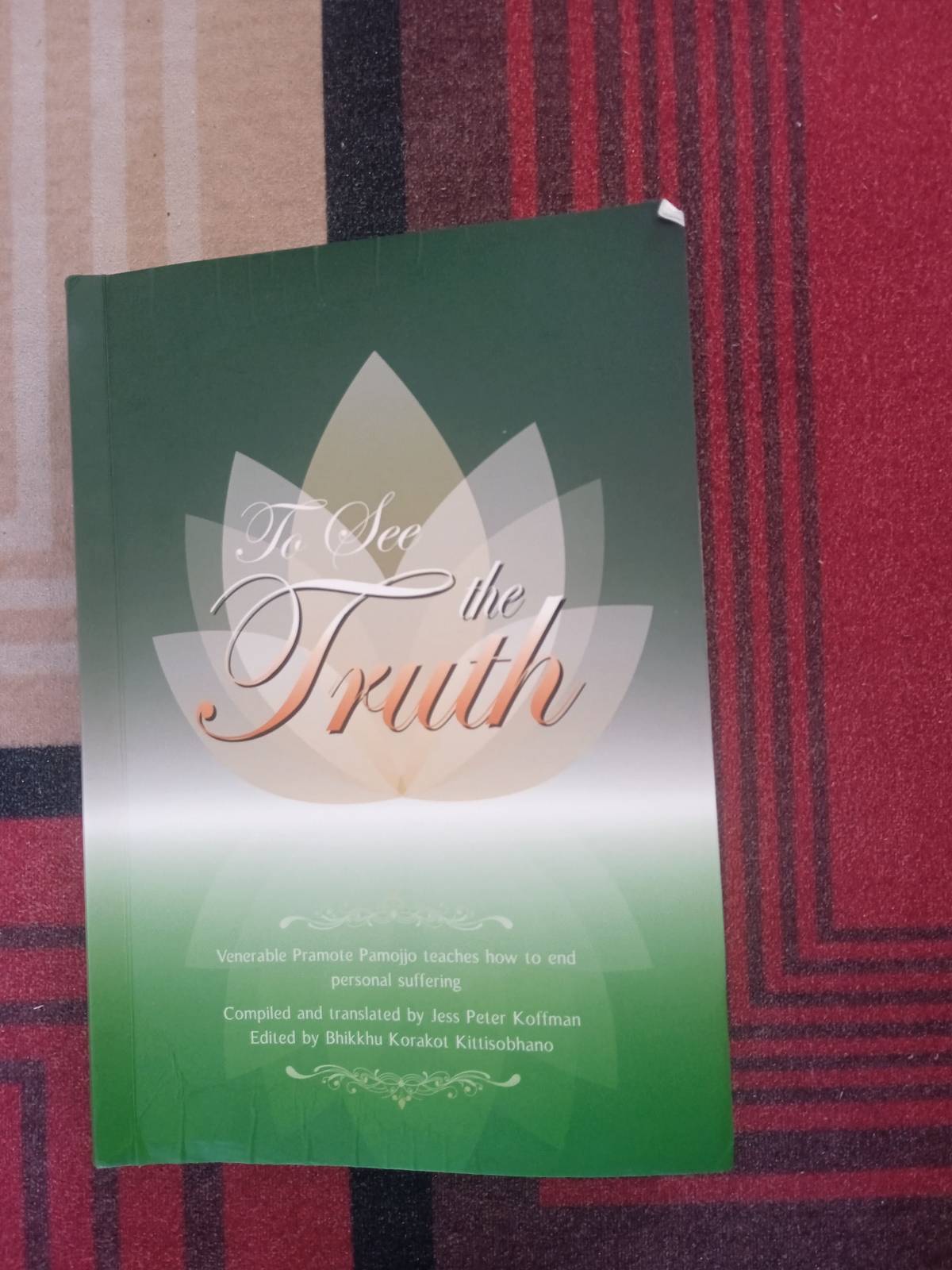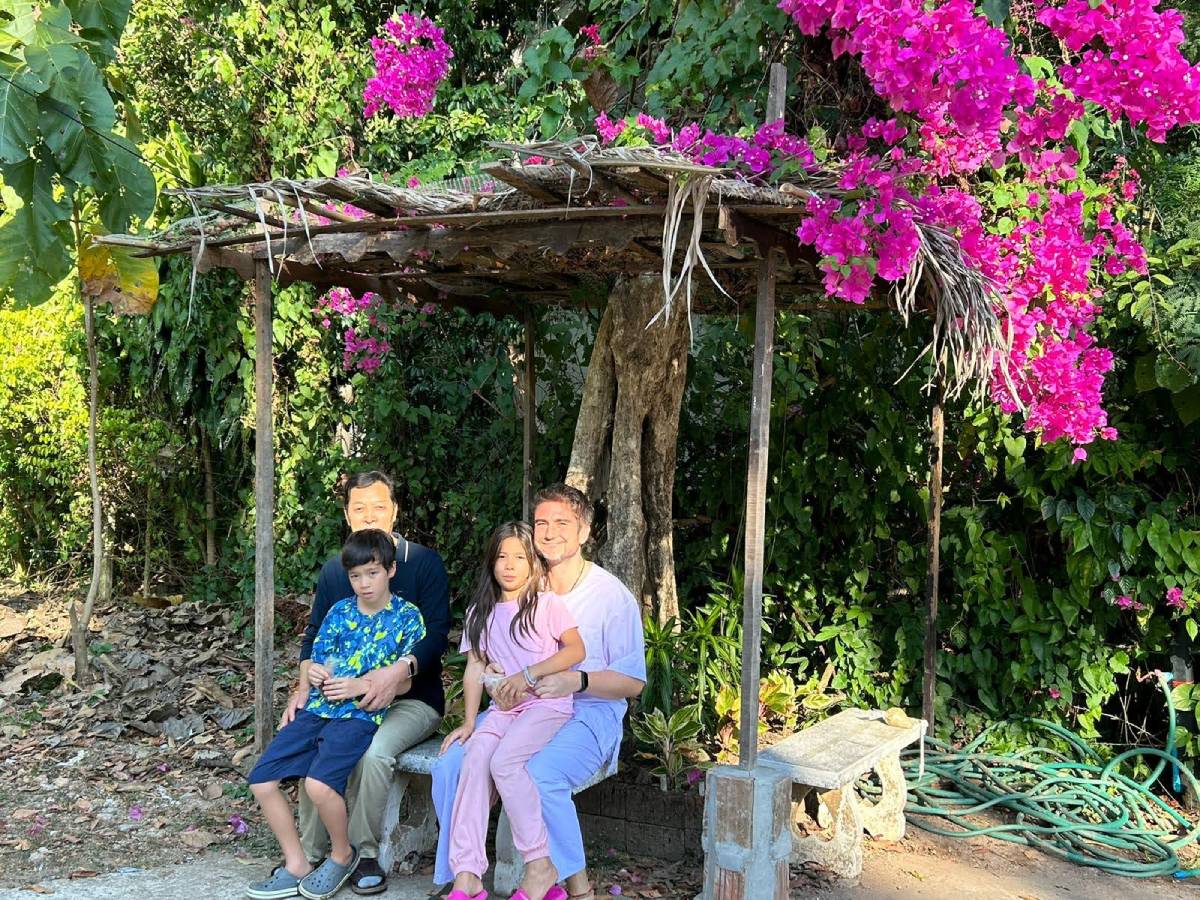We are pushing ahead into a new year – and felt it was a great time to (1) bring my father-in-law to the temple experience at the request of my wife, and (2) prepare my mind for 2024 and the Loadpipe transition.
You can check out the 2 previous temple experiences I have had at temple1 and temple2. This one will be temple3 – and looking forward to having temple4, 5, etc.
This Temple Experience More “Technical”
I feel this one I was prepared – having gone to Wat Umong (Tunnel Temple) earlier (check temple2) and therefore could be a bit more technical.
Spent 3 Days Focused on 1 Book – “To See The Truth”
I picked up a new book –
To See The Truth
Venerable Pramote Pamojjo teaches how to end personal suffering. Compiled and translated by jess Peter Koffman.

And took a lot of “bunny ear” notes (folding of corners) to save to type out for you (and me) later.
Here are some of those excerpts:
It is really a shame if we don’t develop the wisdom to see the nature of reality. Most people in this world are lost, entranced by and perpetually under the influence of the devilments such as dgreed, anger, and ignorance. We spend our lives tryin to get more of what we want and pushing away what we dont want. We are completely deluded about the natural way of things. In every moment that we are not aware of what the body or mind is doing, we are under the spell of the defilements. That is, w are not mindful. Many people have good concentration, but concentration isn’t always a ivirtualous thing. Mindfulness and wisdom are always virtuous. We need mindfulness to bring about wisdom, and we need wisdom to leverage us from suffering.
For both kinds of samadhi, the principles are quite easy. In the first tkind, choose an object in the body or mind that we are ahappy with. When the mind is happy, it will stay concentrated and have no need to look for happiness elsewhere. In the second kind, we watch a meditation object and notice whenever the mind goes away from or towards it instead of just knowing It
Student 1: Work is very busy. It is hard to be peaceful.Languor: Don’t blame your work. You need to change your perspective to a more positive one. Be happy that you have a decent job. If we think in a positive light, the mind is calmer and our practice will improve. I had a very demanding job as well before I ordained as a mink. I practiced diligently nonetheless. Think in a happyr way, and practice more samatha.
It helps to have a home base for our attention in the background. As examples of possible home bases, we can choose the breath, a mantra, or the body’s positions: standing, walking, sitting, and lying down. We can then more easily know when the mind goes off to think. Remember we are not practicing so that the mind stays right and attached to the home base. We are practicing to see what it does naturally. In all likelihood, what th mind will do naturally is think over and over again.
I don’t support the practice of making he mind peaceful and still and then just remaining motionless. Life is short. It is a waste of time once the mind is still to just keep it so. Once the mind is concentrated and has stability, quickly start walking the path of wisdom and distinguish the aggregates from one another. After a while, the mind may start getting too ubusy or restless and be ineffective in this practice. It is then time to make he mind peaceful and a stable observer again. Whoever practices in this way will get quick results.
Note – aggregates are the 5 parts of the mind and body that we need to separate from. 1 = body, 2 = consciousness (mind), 3 = feeling (pain, etc), 4 = emotional state (angry, sad, happy, etc), 5= memory.
Student – I worry I am over focusingLangpor – what you do is ok, but don’t be complacent. Sometimes suffering still affects you a lot and you need to be aware of this when it does. We can know If we are over-fociusing because our mind will have a heaviness to it. If we are knowing in a relaxed way, there will be a lightness. Right now you are over-focusing. There will be heaviness. Generaly , what meditators tend to do can be divided into two groups, the first group tends to over-focus, fixate, push and force. This group interferers with and takes a managerial role regarding physical and metal phenomena. The other group gets lost in what arises. If we know what group we are fitting into at any partial time, we will practice without much difficulty. The middle way is not to exercise control and not to get lost.
When we reduce our practice of holding attention t one spot, and allow the eyes, ears, tongue, nose, and body to do they work naturally, the deferments wil lbe stronger. There is a period where they will be even stronger than non-meditatiors.
Mike’s explanation – when you start to separate out the aggregates, and understand your suffering, it will be more painful than when you are not meditating. But this is “putting out the fire” and once the fire is out, when there is a match that sparks again, your mind can quickly blow out the fire on the match. So it is a process of calming the house fire in your mind of these different sufferings and aggregates.
Keep practicing and one day the suffering will not arise in the mind at all. The Buddha’s teachings are quiet specially. The teach us how to end suffering. When we practice correctly we will see progress, changes in our lives and in our mentality very clearly. We will get lost in thought less; mental suffering will be less severe and for shorter periods.
Once my mind becomes peaceful, I keep seeing what the body and mind do from moment to moment. I watch the body stand, walk, site and lie down – not me, the body. The body sits, it is not me sitting,. The body lies down, it is not me lying down. The body is just a material thing with a mind in it, just a bundle of elements , with an inflow and outflow of such elements occurring contunouslyl. Or I watch the mind. It works all day and all night, thinking and making things up. One moment it is happy, the next it is unhappy. One moment it is nice, the next it is mea,. It goes around and around like this nonstop. It goes from the eyes to see, to the ears to hear, to the nose to smell, to the tongue to taske, to the body surface to exerpeice sensations and into the mind to think. Around and around it goes thinking by itself all the time.
Know as much as possible. We can’t practice when we are working and are require to think, and need to know the content of the thoughts. We also cant practice when we are asleep. All other times, we can watch our minds.
Nowhere that you choose to dwell will be happy. We are suffering, so anywhere we go, suffering will follow. It is the mind that suffers, the mind that resists. We don’t want to be where we are , so we suffer. If we can be mindful we can see that the mind is suffering because it is not impartial to what arises. The disliking is causing suffering. Try to be aware as much as you can.
If we practice correctly, the changes will happen very fast. One change we will notice is that defilements (anger , greed, lust, etc) will seem to arise more often than before, but they will be lighter and less effective in taking over the mind. This is because mindfulness sees tham and knows them before they increase in size. It is very easy to blow out a match, but very hard indeed to blow out a full-fledge house fire. Once a little flame of irritation is un-noticed, a full fire of hatred can be unleashed. The quicker our mindfulness, the faster it puts out the little first and the less likely it is for a larger defilement to come up.
If we keep noticing what arises as much as possible, one day the defilements will not take us over anymore, and we will be free from their power. We must be determined in order to accomplish this.
Student: Should I stop practicing samatha, and only do vippasana ?Luangpor – I’m not saying to stop practicing samatha. Keep ding it if you like it , but when you come out of deep concentration (the first kind of samadhi), please keep watching the mind. Languor Phud taughtt that at this moment, when the mind comes out of samadhi, is a golden opportunity for meditators. The mind is pure and clear like a table that has just been watched. It is clear and shining bright. When just the smallest bit of dust appeared, it is easy to spt. At this point, it is easy to see even the most subtle phenomena when thy come up.
Mike’s Summary – Learning to “Play” with Samatha and Vippasana
I have been meditating since at least mid 2015 and I feel still so much to learn.
But this temple3 experience was where I leveled up on the technical ability. The idea to use both samatha and vippasana methods intertwined helps a lot. To use samatha to calm the mind, and then can analyze the thoughts and your body as a separate piece from “you”.

Maybe this is too advanced for many, but hope these highlights from the book help. The point is – we need to be mindful of what the mind and body is thinking and feeling. Once we are aware, we can calm it down and address the thoughts and feelings – instead of letting it control us.

